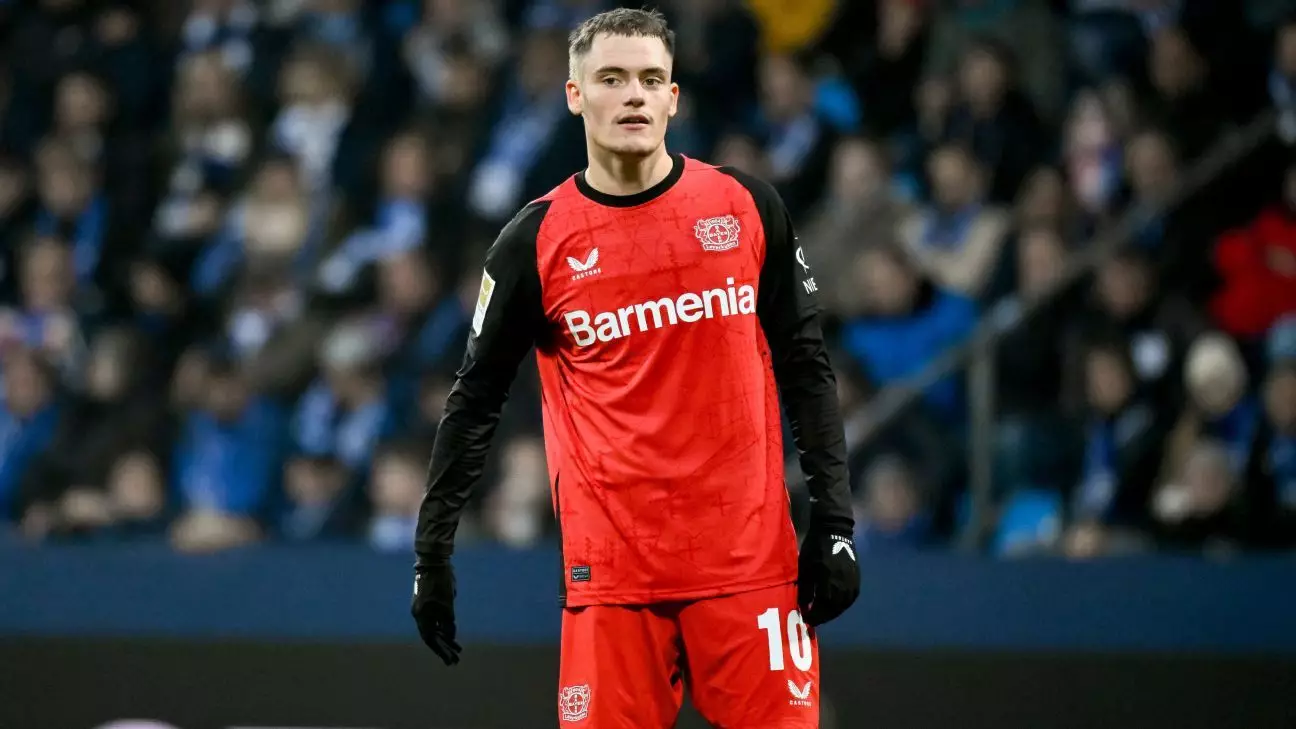The football transfer market is an arena where speculation and ambition collide, shaping the future of clubs and players alike. Recently, Bayern Munich has positioned itself at the forefront with ambitions of acquiring Bayern Leverkusen’s Florian Wirtz. This transfer would signify more than just a strategic addition to the squad; it symbolizes the broader dynamics of European football, where clubs are vying for the brightest stars amid fierce competition.
Reports suggest that Bayern Munich has made Florian Wirtz their prime target for the summer transfer window. The 21-year-old playmaker has garnered attention not only for his technical skill but also his potential to evolve into a pivotal figure in any team. Bayern’s sporting director, Max Eberl, has already engaged in discussions with Wirtz’s family, showing the club’s genuine interest in him. However, the acquisition is contingent on generating adequate funds, likely through the sale of existing first-team players.
This strategic move underlines a crucial decision-making moment for Bayern. The club must balance its ambition with financial prudence, especially given the market’s volatility. Moreover, Wirtz’s talent has captured the eyes of other top clubs, including Real Madrid and Manchester City, making this pursuit a race against time and rival interests. A robust plan will be essential if Bayern is to fend off these formidable competitors and secure Wirtz’s signature.
Manchester United is reportedly contemplating a bid for Éderson, a midfielder currently playing for Atalanta and contracted until 2027. His recent performances have made waves, especially after his debut with the Brazilian national team. This potential transfer aligns with United’s ongoing quest to bolster their midfield options, which have been inconsistent in recent seasons.
Competition from Manchester City adds another layer of complexity to United’s bid. Such rivalries relegated to the Premier League creates an environment where players can manipulate their requests, drawing on multiple offers. If United wishes to reinforce their midfield with Éderson, swift action and alluring terms may be needed as both clubs seek to corner the market on emerging talents.
Manchester City’s scouting network appears to have identified another potential gem in Sporting CP’s winger, Maxi Araujo. Having impressed in the UEFA Champions League and already contributing significantly to his team’s efforts, Araujo’s trajectory mirrors that of many players who transition from promising prospects to established stars in a short span.
City’s interest reflects a wider trend in football: clubs increasingly rely on youthful exuberance to maintain their competitive edge. The decision to target players like Araujo suggests that City is strategically focused on acquiring versatile wing options, a critical aspect in maintaining their attacking dynamism. This highlights the changing narrative in the transfer market, where youth and potential can outweigh established reputations.
Liverpool remains vigilant in their pursuit of Martín Zubimendi, making plans for a second bid in January. After failing to secure his signature in the summer — despite an earlier agreement to meet his release clause — the club is preparing for another attempt. Zubimendi’s hesitations indicate the complexities of player decisions influenced by various factors, including personal aspirations and club stability.
As Liverpool navigates this potential deal, it encapsulates a broader theme in transfers: players hold more power than ever in shaping their destinies. Should Zubimendi choose to remain at Real Sociedad after all, it would not only be a setback for Liverpool but could also resonate within the corridors of several clubs analyzing similar risks.
The case of 18-year-old Endrick at Real Madrid represents yet another facet of the current transfer landscape. Despite interest from multiple clubs, Madrid’s resolve to retain him as a future asset underscores the importance of player development and retention in modern football. His potential symbolizes the promise that lies in nurturing young talent but highlights the challenges clubs face in managing expectations amidst lucrative offers from rivals.
The ongoing transfer discussions not only reveal the strategies employed by top clubs but also reflect the evolving nature of football economics. With clubs adjusting their approaches, the market remains ever-fluid. It will be fascinating to watch how this dynamic unfolds as clubs jockey for position in the race for football’s next generation of superstars.

Leave a Reply